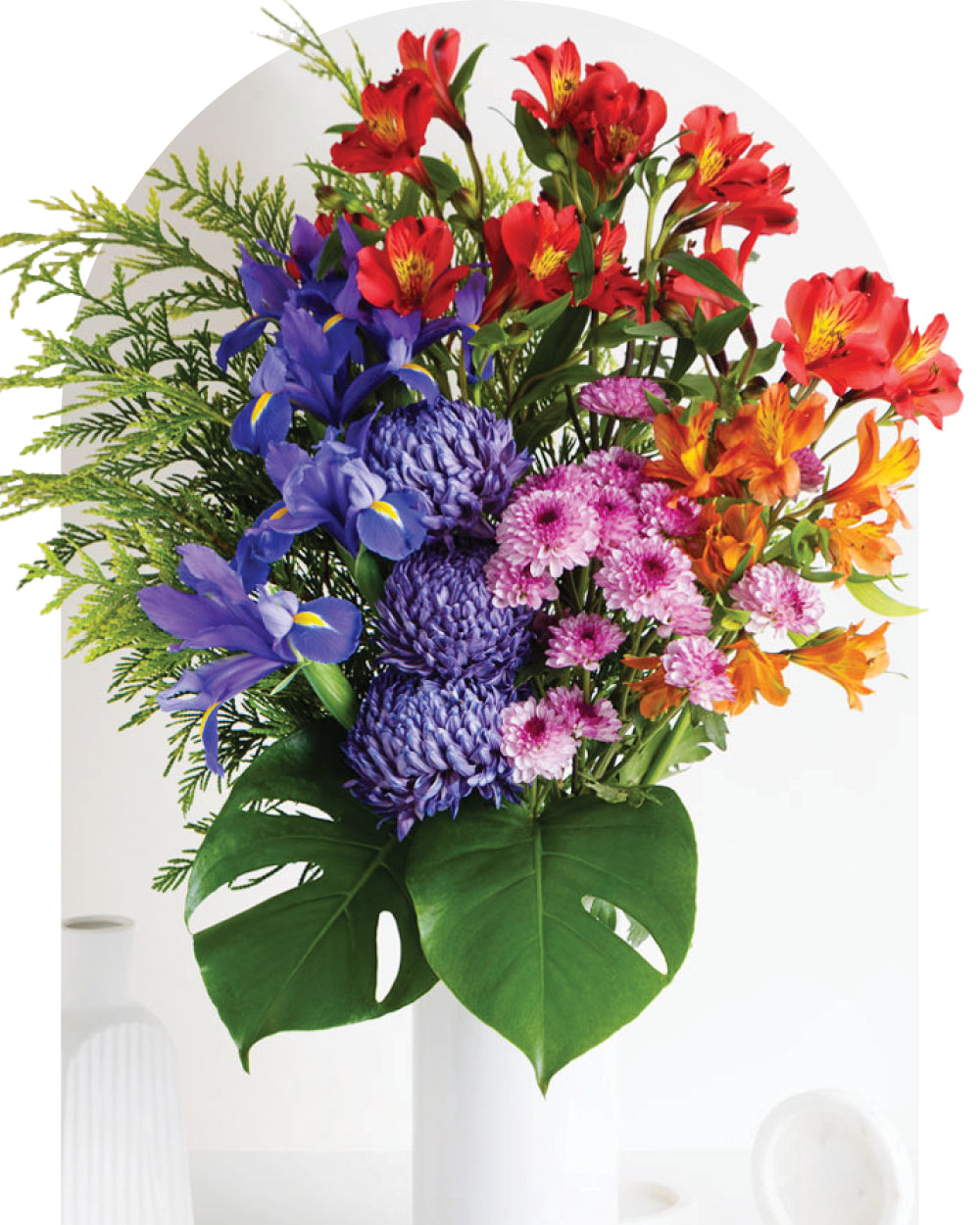We’re not just saying this as we’re florists and we’re low-key (or not so low-key) obsessed with flowers! We’ve recently had a lot of fun doing some research and experimenting with flowers in our recipes at home. While many of us are locked down at the moment and finding we have more spare time on our hands, it can be a great opportunity to be a little playful and make some fun creations! Read below about some different types of edible flowers and some of our favourite recipes we’ve found 😋
Edible Flower Types
Nasturtiums are probably one of the most well known edible flowers. They’re relatively easy to grow: they like partial to full sun, well-draining soil and can tolerate cool temperatures, but may be damaged by frost. All colours and varieties can be eaten – including the leaves! They have a slight peppery taste, similar to watercress and so are great in savoury dishes, like a Nasturtium pesto.

Marigolds are fast growing and quite versatile! Most marigolds prefer full sun, however they will tolerate some shade. During times of extreme heat, some afternoon shade is beneficial. Marigolds germinate quickly, sprouting within a few days and blooming in about 8 weeks, which makes them very easy to grow from seed! A suggestion is to use the tiny flowers of signet marigolds, such as Lemon Gem and Tangerine Gem – their blossoms have a citrus taste. We love this recipe of Raw Calendula Beauty bars containing Marigold.

Pansies and Johnny jump-ups come in a huge variety of colours and are quite adaptable to whatever dish you want to put them in! They have a mild, sweet, grassy flavour and can be used as a garnish for salads, soups and hors d’oeuvres, or crystallise the flowers for a magnificent dessert decoration. We love this recipe for Pansy shortbreads Pansy’s are relatively simple to grow as well, they generally like cooler weather and thrive in the spring and fall. They will sometimes even grow through the winter, depending on how cold your region gets. They prefer moist soil, and will generally do well in a shady area, especially in warmer weather and can be grown easily from seed.

Calendula is an easy and prolific edible flower that’s easy to grow from seed right in the garden. They’re adaptable and do not require a lot of maintenance – roots will often adapt to the space provided. The amazing pot marigold can be grown in containers or beds in full sun to shade conditions. As the Calendula prefers cool temperatures, flowers last longer in filtered sun or shady areas. Known for its medicinal properties, calendula is used to help soothe skin, as an antiseptic and an anti-inflammatory. Mainly the petals are used in cooking – giving stews, broths and salads a mildly spicy taste similar to saffron. The petals were actually used as yellow colouring in cheeses and butters in centuries past! See here for some inspiration in its many uses.

Anise hyssop – if you like anise, this is the edible flower for you. The leaves emit a scent similar to basil or French tarragon and can be used in both sweet and savoury dishes. They like to be planted in Spring and need full sun to really thrive.
Borage is a fuzzy-leaved herb with sky-blue flowers. It has a light cucumber taste and is a great addition to salads, fruit salads, to freeze in ice cubes and in lemonade! You can also get a bit creative, as in this recipe for oven baked pollock. Borage will grow in full sun to part shade, however if you want a plant with lots of blooms and stocky stems then full sun is best. The good news: Borage can thrive in even the most dismal of soils, so there’s no need to carve out a special spot in your garden for this herb. However, given the choice, the plant prefers moist but well-drained soil.

Bee balm is actually a member of the mint family and has minty-tasting flowers. Colours can range from bright red to purple and pink. It’s best to plant in the Spring or Autumn, and it thrives in full sun. Make sure the Bee balm has good air circulation, otherwise it could develop powdery mildew on its leaves. Bee balm is great in savoury dishes, and even in a simple tea.
Chamomile – a flower that many are familiar with and one you can probably find in tea bag form in your local grocery shop! English chamomile has small, daisy-like flowers with an apple-like flavour. They prefer full sun or partial shade, but don’t like extreme heat. It flowers best if grown in rich, organic soil and doesn’t require too much water. We personally love chamomile in desserts, like this honey chamomile panna cotta.

Daylily buds and flowers taste a bit like asparagus, and can be used as a garnish, or can be stuffed or made into fritters. They’re also delicious in stir-frys! Daylilies flower best when planted in full sun on moist, yet well-drained soil. When planted in the correct location, daylilies will flower for years with little care. Try this yummy recipe for stuffed Daylily flower fritters.











